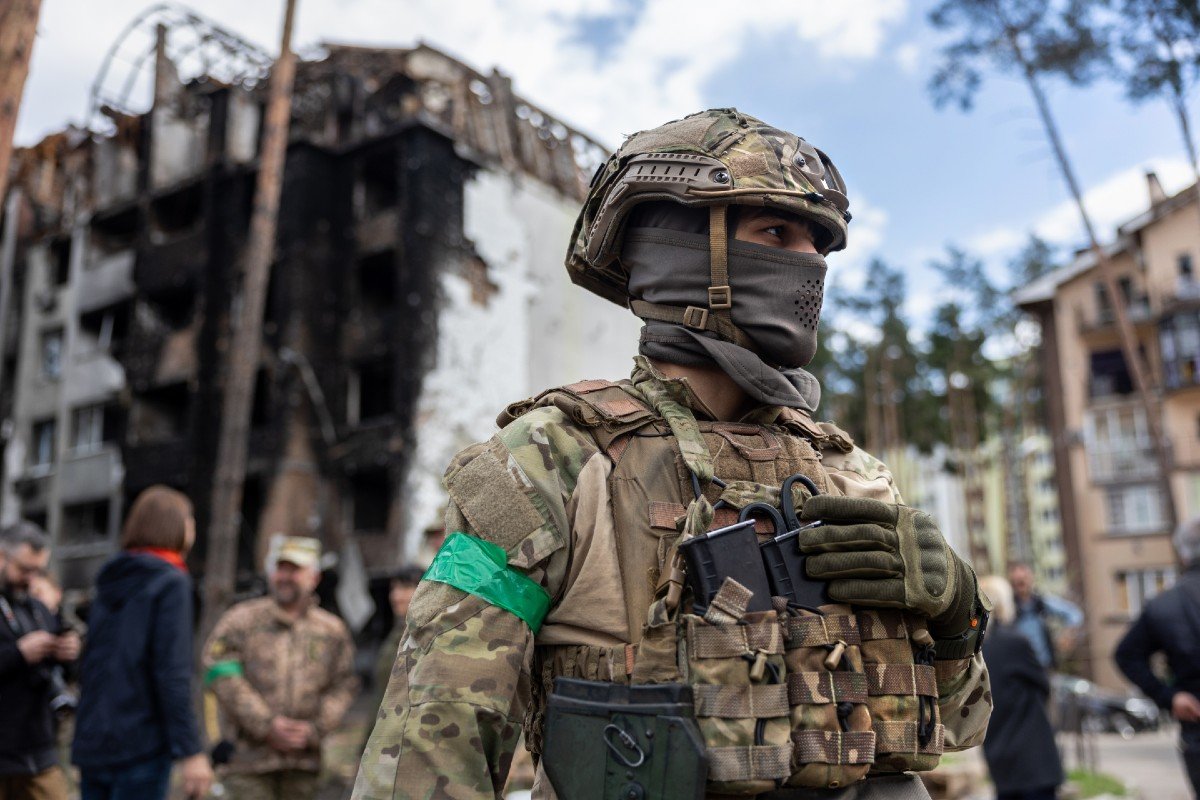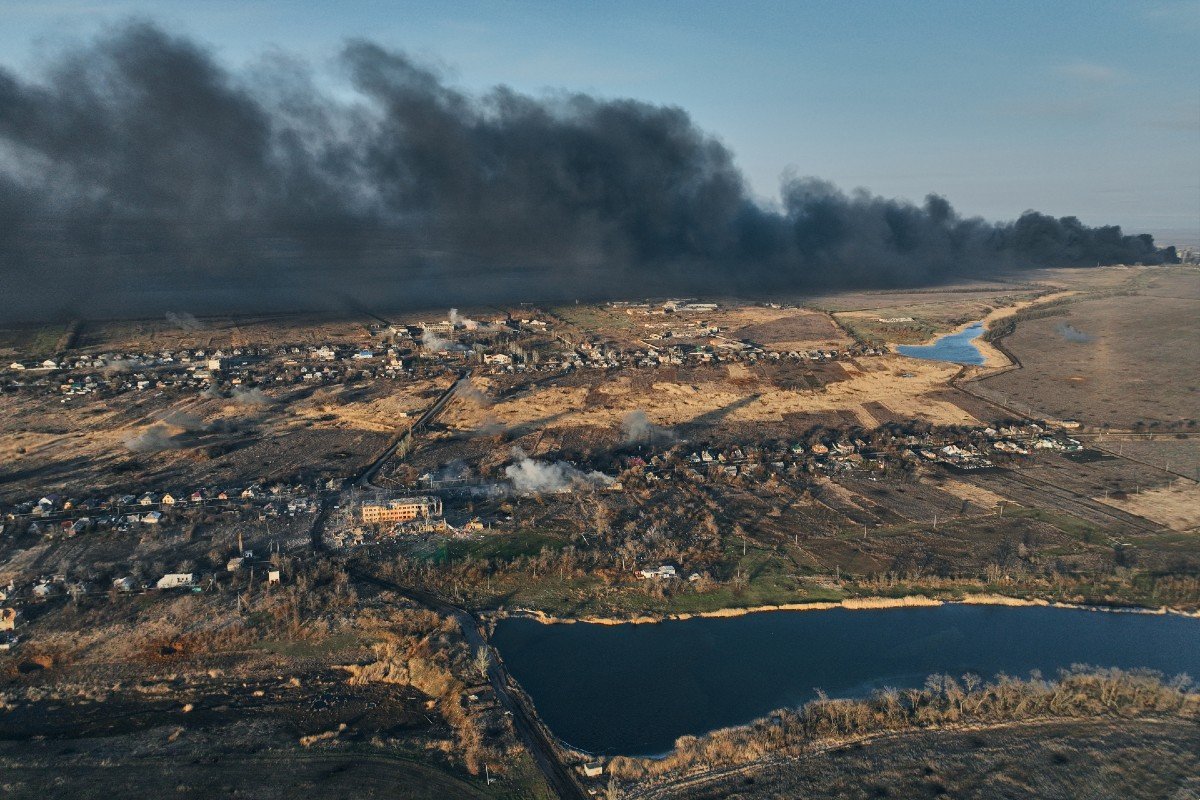Ellie Cook
On the eve of the second anniversary of Russian troops rolling across the Ukrainian border for Moscow's full-scale invasion, the human cost of 24 months of warfare is staggering.
On Thursday, Ukraine's military said Russia had sustained 407,240 casualties since February 2022, including 1,160 in the previous 24 hours. In an operational update on Wednesday, Russia's Defense Ministry said that Ukraine had lost almost 1,200 troops in the previous day. Moscow does not provide a running tally of purported Ukrainian losses.
It is impossible to know what the true casualty counts look like on both sides. "Nobody really knows accurate numbers" through the fog of war, said Kurt Volker, former U.S. special representative for Ukraine negotiations.
It is not entirely clear how Ukraine's military calculates its daily-updated figure, but if it includes overall casualties as well as Russian fighters who are missing or died in non-combat circumstances, it is a "perfectly plausible" tally, according to Nick Reynolds, a research fellow for land warfare at the London-based Royal United Services Institute think tank.
Newsweek has reached out to the Russian Defense Ministry and Ukrainian military for comment via email.
 A Ukrainian army soldier stands guard on April 28, 2022 in Irpin, Ukraine. On the eve of the second anniversary of Moscow's full-scale invasion, the human cost of 24 months of warfare in Ukraine is... MoreJOHN MOORE/GETTY IMAGES
A Ukrainian army soldier stands guard on April 28, 2022 in Irpin, Ukraine. On the eve of the second anniversary of Moscow's full-scale invasion, the human cost of 24 months of warfare in Ukraine is... MoreJOHN MOORE/GETTY IMAGESU.S. officials said in August that the combined total of fighters killed or wounded on both sides came in around 500,000. This figure will now be significantly higher. In late January, Britain's armed forces minister, James Heappey, told U.K. lawmakers that Russia had sustained around 350,000 casualties in Ukraine. Tens of thousands of mercenaries serving with the Wagner Group—which were influential in operations to take the Donetsk city of Bakhmut in May 2023—were also killed and injured, Heappey said.
Ukraine's casualties are opaque. In August 2023, U.S. officials told The New York Times that around 70,000 Ukrainian soldiers had been killed, with up to 120,000 wounded.
Russia has occasionally put forward statistics, although it is hard to take numbers from either side at face value. In early August, Russian state media carried remarks from Moscow's Defense Ministry, which said Ukraine had lost more than 43,000 troops in under three months of its summer counteroffensive push in 2023.
Russian President Vladimir Putin said in mid-June 2023—just as Ukraine kicked off this counteroffensive—that "Russia suffers 10 times fewer losses than Ukraine." At the end of the year, Russian Defense Minister Sergei Shoigu then said Ukraine had sustained 383,000 casualties since February 2022, according to Russian state media reporting.
This figure is inflated, and too high to be a true count of Ukrainian casualties, Reynolds told Newsweek. But it has nonetheless been a "very, very painful war for the Ukrainian people," he added.
Ukraine may have suffered many of its casualties during the first summer of all-out war, before much Western aid had arrived and Russia was at the height of its artillery strength, argued Frederik Mertens, an analyst with The Hague Centre for Strategic Studies.
The loss of experience within the ranks for both militaries has been huge, and Ukraine is stretched in rotating personnel and training new recruits, Reynolds evaluated. Kyiv is also hard pressed to evacuate injured fighters to save both life and limb, he added.
The numbers do not tell the full story—Russia has a far larger reserve of troops than Ukraine, and has a much bigger population from which to recruit. Russia has one of the largest active armed forces in the world, with around 1.1 million active personnel and 1.5 million in reserve. Ukraine has between 500,000 and 800,000 active personnel, with up to 400,000 in reserve, but is thought to have approximately one million people under arms.
But this does not assure quality. Russia's casualty count in 2023 spiked compared to the previous year, which "almost certainly reflects the degradation of Russia's forces and its transition to a lower quality, high quantity mass army" following Moscow's partial mobilization in September 2022, the U.K. Defense Ministry has previously said.
'Meat Grinder' Avdiivka
Casualties and losses have picked up several times during the two years of war, corresponding with drawn-out battles for key settlements. In early May 2023, the U.S. estimated that Russia had suffered 100,000 casualties in just five months as fighting intensified around Bakhmut, including around 20,000 fighters killed.
Russia launched its offensive on the strategic Donetsk city of Avdiivka on October 10, 2023, starting a grueling battle lasting more than four months until Ukrainian forces withdrew from the city on February 17, 2024.
During this time, Russia's forces lost more than 47,000 troops, Brigadier General Oleksandr Tarnavskyi, the commander of Ukraine's Tavria grouping of forces covering Avdiivka, said on Sunday.
Of these, around 17,000 soldiers were killed, Tavria spokesperson Dmytro Lykhovii later said. This is higher than the Soviet death toll in the more than nine years Moscow spent fighting in Afghanistan from late 1979.
A Russian military blogger claimed that the Russian army lost 16,000 soldiers in Avdiivka, before later reportedly dying by suicide.
 Smoke rising from the Avdiivka coke and chemical plant behind the village of Lastochkino, on February 15, 2024 in Avdiivka district, Ukraine. Russia launched its offensive on the strategic Donetsk city of Avdiivka on October... MoreKOSTIANTYN LIBEROV/LIBKOS/GETTY IMAGES
Smoke rising from the Avdiivka coke and chemical plant behind the village of Lastochkino, on February 15, 2024 in Avdiivka district, Ukraine. Russia launched its offensive on the strategic Donetsk city of Avdiivka on October... MoreKOSTIANTYN LIBEROV/LIBKOS/GETTY IMAGESBakhmut and Avdiivka are "clear examples" of Moscow's willingness to commit troops until they secure the "shattered ruins of their prize," Mertens told Newsweek. Both Donetsk cities have been flattened by fighting, claimed by Russia after long and devastating campaigns.
Moscow "took huge casualties in order to take Avdiivka," Volker, a former U.S. ambassador to NATO and now a distinguished fellow with the Center for European Policy Analysis, told Newsweek.
Ukraine suffered bruising losses in Avdiivka, and dozens of Ukrainian soldiers became trapped behind enemy lines as Kyiv retreated, the Washington Post reported on Wednesday, citing Ukrainian intelligence passed to three U.S. officials.
Avdiivka has also been a black hole for equipment losses. During the battle, Ukraine posted images appearing to show destroyed Russian tanks and armored vehicles littered around the outskirts of the settlement. Western analysts quickly said Russia had lost a litany of armored vehicles in the first waves of Moscow's assault, switching to infantry-led attacks to conserve the remaining vehicles. But in the last weeks of the Russian encirclement of Avdiivka, Ukrainian officials said the Kremlin had once again upped its armored vehicle attacks.
Moscow lost a total of 364 tanks and 748 armored fighting vehicles during its offensive on Avdiivka, Tarnavskyi said at the weekend. It also lost 248 artillery systems and five jets, the commander added.
Wider Equipment Losses
The materiel losses have been stacking up more widely. Russian equipment losses are, by Kyiv's count, sky high—Russia has lost 6,523 tanks, plus nearly 12,400 armored vehicles and 9,867 artillery systems, per the Ukrainian military's Thursday figures.
By Russia's numbers, Ukraine has lost 15,149 tanks and armored vehicles, as well as more than 8,100 artillery systems.
Earlier this month, a leading think tank said Russia had now lost more tanks on the battlefield in Ukraine than it had operational when Moscow's forces rolled into Ukraine in 2022.
Russia has lost approximately 1,120 tanks in the past year, according to the U.K. defense think tank, the International Institute for Strategic Studies (IISS), totaling more than 3,000 since February 2022.
Moscow has lost roughly 2,000 armored personnel carriers and infantry fighting vehicles in the last 12 months, the organization said. This correlates with other Western estimates, including from the U.K. government. London's Heappey said in January that Russia had lost around 2,600 Russian main battle tanks and 4,900 armored vehicles.
However, Russia has pulled mothballed replacements from storage, and ramped up its defense production to pull up its military spending and replenish its losses. Moscow has "significant boneyards" of Soviet-era legacy stocks to fall back on, supplementing the newly-generated equipment, Reynolds said.
Russia now has approximately 1,750 operational main battle tanks of various models, from the now-aged T-55s to modern T-90s. It has several thousand more in storage.
Ukraine's tank fleet has morphed in the past two years, Western aid supplementing its Soviet-era vehicles with NATO-standard tanks. Kyiv has around 937 tanks as of the start of 2024, according to the IISS, including several models of the German-made Leopard tanks.
But Russia is in better shape with its equipment losses because Ukraine is reliant on its Western backers, with its defense industry under siege from Russian strikes, Reynolds said. Ukraine can hold on in the near future, but lacks the capacity to regenerate losses that Russia has.
Moving toward the third year of all-out war, Ukraine is anxiously waiting on promises of Western military aid that it sorely needs to sustain its war effort in the coming months. With little hope of the conflict coming to an end anytime soon, the casualties and the losses will continue to mount on both sides.
No comments:
Post a Comment